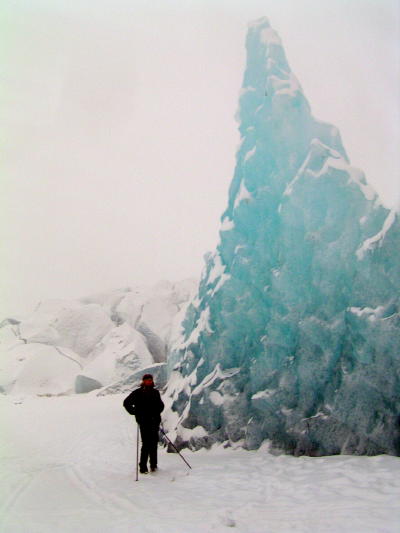I’m sure you’ve heard the term “That’s just the tip of the iceberg” but what exactly does this mean? To understand this, let’s look at what fraction of an iceberg lies below the water. The weight of the iceberg is Fg = ρiVig where ρi=917kg/m^3 and Vi is the volume of the whole iceberg. The magnitude of the upward buoyant force equals the weight of the displaced water: B = ρwVwg where Vw, the volume of the displaced water, is equal to the volume of the ice beneath the water, and ρw is the density of seawater, ρw = 1030kg/m^3. Because ρiVig = ρwV wg the fraction of ice beneath the water surface is:
f = Vw/Vi = ρi/ρw = (917kg/m^3)/(1030kg/m^3) = 0.890 or 89% This means that 89% of the iceberg is underwater, while only 11% is visible above.
(This problem taken from Physics for Scientists p.430)
Roughly 89% of the ice is underwater!!! Photos by Brenton Savikko
 To get an idea, I'm about 5'10". That's a big iceberg!
To get an idea, I'm about 5'10". That's a big iceberg!